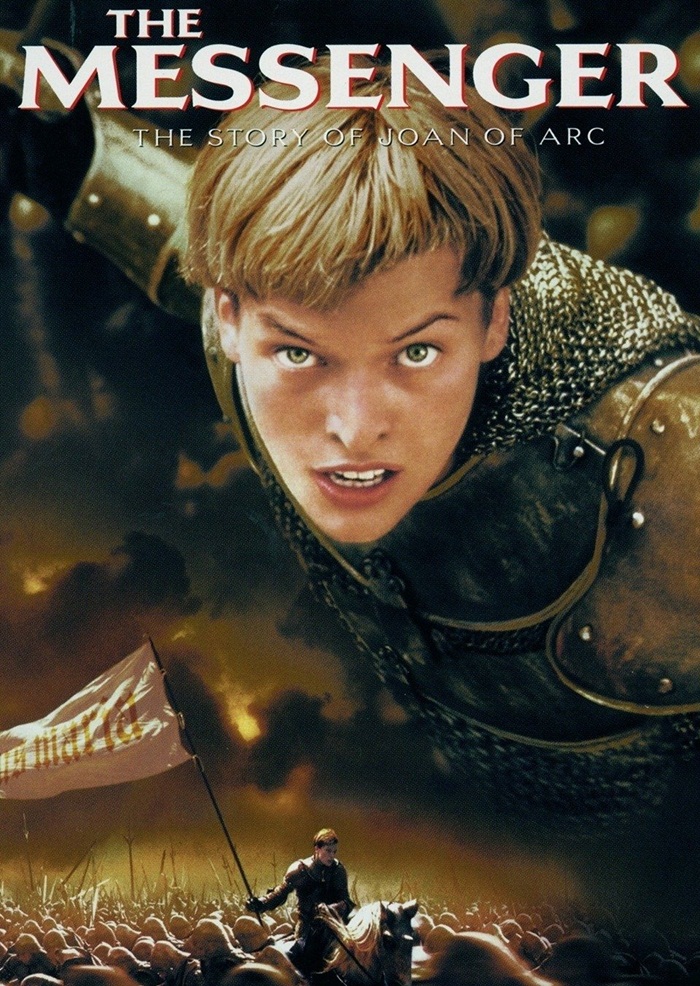
On 30 May, 1431, a 19-year-old girl was bound to a stake and burned alive in Rouen’s marketplace. The same church that dispatched her to her cruel death in 1431 would go on to number her among the saints in 1920. The same country that abandoned her to her fate would go on to revere her as their patron. This military wunderkind who went from heretic to heroine, from sorceress to saint, has inspired countless cultural depictions. Analyzing them all would require a serialization or a multivolume, so let’s just look at two movies.
Luc Besson’s 1999 film is as heavy as its title is wordy. The Messenger: The Story of Joan of Arc unsettles Fleming’s hagiographic depiction, trading the romantic, saccharine maiden for a crazed, vindictive woman. Although Joan’s motivations are based on invented premises, the movie offers a compelling portrait of a psyche that is progressively traumatized by the depravities of war.
After finding a sword in a field and experiencing a symbolically charged vision, Joan (Milla Jovovich) witnesses the devastation of her village, and the assault and murder of her fictional older sister at the hands of English soldiers. The voices and visions—a coping mechanism for survivor’s guilt stemming from trauma, an overactive imagination, and a religious upbringing—evolve from an innocent distraction to a serious preoccupation.
The veneer of the mystical messenger flakes over the course of the movie to reveal a mentally struggling woman prone to angry outbursts, impulsivity, and sadness. Perhaps she was an unexposed intellectual who thrust her ideas upon a religious scaffolding for lack of a better one, who turned frustrated upon not being taken seriously.
Alone in prison, she is confronted by her conscience (Dustin Hoffman) in the shape of a hooded old man she fails to recognize as she had visualized a vaguely Christlike youth, showcasing the discrepancy between who she thinks she is and who she actually is. Instead of comforting her, her conscience terrifies her by questioning her assumptions and unearthing her true intentions.
When Joan desperately attempts to tidy up her narrative by ascribing religious significance to random signs (bells ringing, winds whispering, the sword in the field), her conscience delivers what is arguably the most powerful line in the movie, “You never saw what was, Jeanne. You saw what you wanted to see.” This leaves us wondering and pondering whether there is a via media between literalism and inference.
Although critically panned for its casting of Jovovich in the lead, sloppy editing, anachronistic cusswords, and motley bunch of accents, Besson’s movie earns its credit for its treatment of looking and seeing. In addition to being a central theme in the movie, it is inherent in the artistic vision that uses plot, casting, characterization, dialog, setting, and background score to achieve a desired perception of a figure or an event.
The supporting French characters fall into two camps: supportive (Fleming’s) and unsupportive (Besson’s). The 1999 movie offers a secular and divisive opinion of Joan. Yolande of Aragon (Faye Dunaway) uses her as a propaganda tool because she fits the bill of a prophesied savior from Lorraine, Charles VII (John Malkovich) is a desperado with an ulterior motive, his courtiers are skeptical, Joan’s companions-at-arms fluctuate between inspired, impressed, and irritated. The 1948 movie depicts a level-headed, unimpeachably endearing Joan who is respected by Charles VII (José Ferrer) without much ado, and embraced by the French army. The supporting characters are surrogates for the viewers because we see Joan through their eyes.
The various possibilities of perception become apparent when you line up the historical biopics on Joan of Arc. Consider this: Fleming’s opening credits identify the English and the Burgundians as “The Enemy”. His movie opens with a voiceover of her canonization in an exquisite church illuminated by a host of candles, but Besson presents the info about her canonization as a sober postscript on a black screen. For Fleming, the movie is a tribute and a celebration of Joan’s saintliness in life and sainthood after death. For Besson, her canonization is either a neutral fact or a heavy irony, given that his movie does not tie up any loose ends with regard to the source of her visions.
Of all the ways we can look at our heroes, our countries, ourselves, how do we choose to look, and what do we choose to see?
∎